DP Pat Scola harnessed the glow of KODAK 16mm film to bring warmth and honesty to director Greg Kwedar's affecting drama 'Sing Sing'
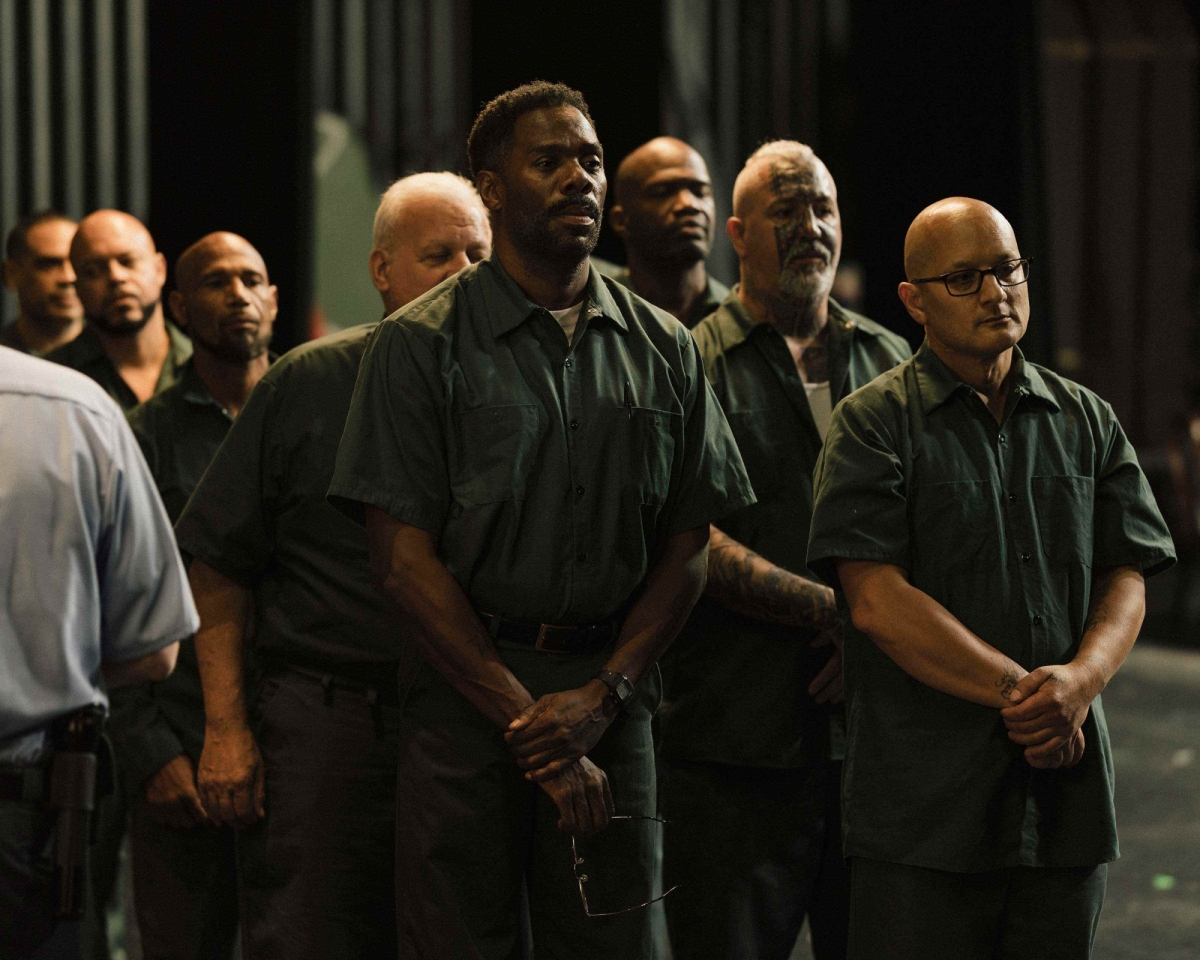
(L-R) Colman Domingo, Sean San Jose. Credit: Dominic Leon
Sing Sing, directed by Greg Kwedar and co-written by Clint Bentley, is far from the regular prison-based drama you might expect. Captured on KODAK 16mm film by DP Pat Scola, the movie presents an altogether different picture about incarceration and the transformative power of the arts on those behind bars. And it is widely tipped for accolades in the 2025 awards season.
The film is based on the real-life, on-going Rehabilitation Through the Arts (RTA) program that operates within six New York State prisons. It is designed to help people in prison develop critical life skills through the arts, modeling an approach to the justice system based on human dignity rather than punishment, so they are more able to meet the challenges of connecting with family and community when released, and thereby reduce recidivism.
Set inside Sing Sing Correctional Facility, one of the world's most infamous maximum security institutions, the narrative follows Divine G, jailed for a murder he did not commit, who finds solace and purpose by acting in an RTA theatre group alongside other incarcerated members. Until, that is, the hot-tempered Divine Eye joins the troupe to participate in its next production.
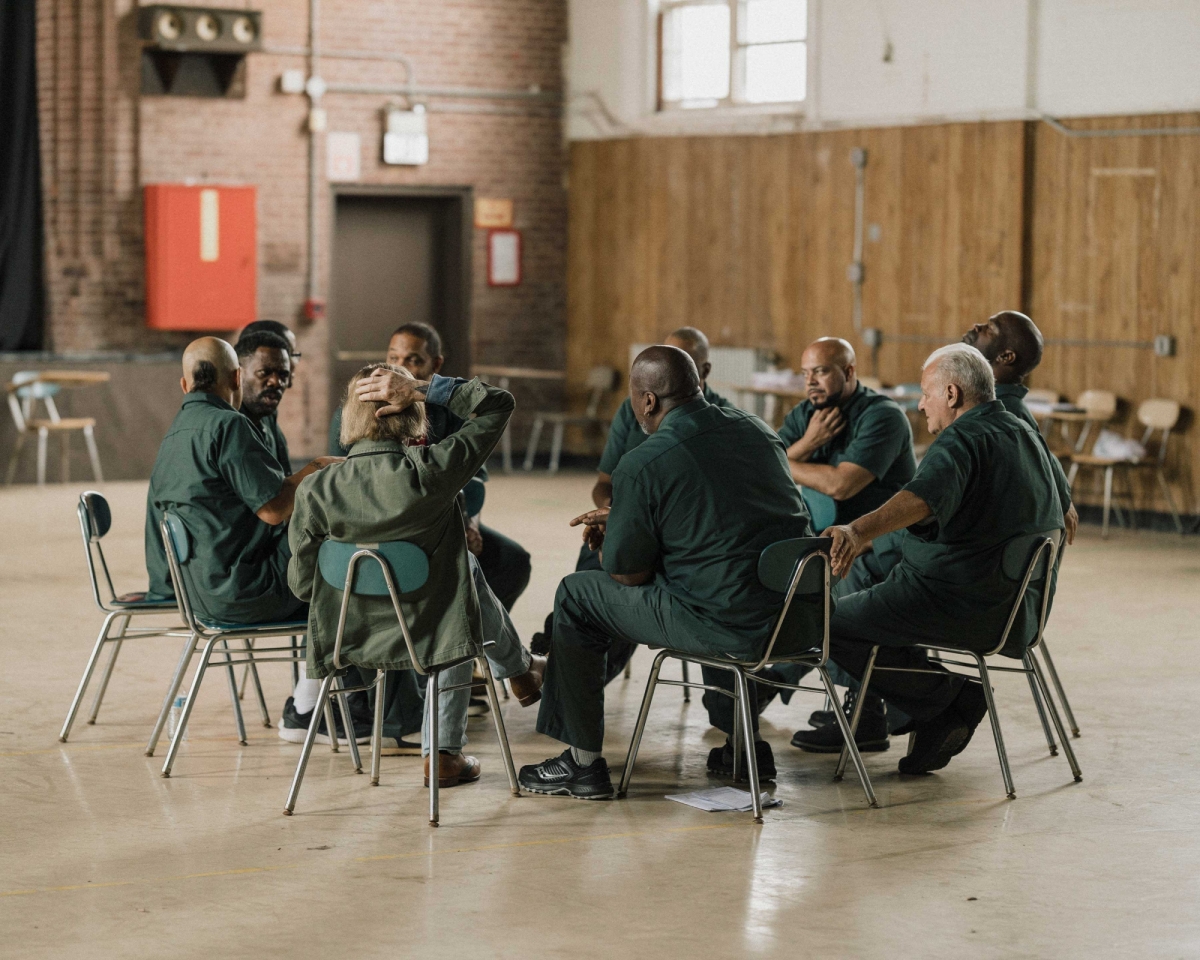
A scene from Sing Sing. Courtesy of A24.
The various reasons why this band of brothers are imprisoned are never revealed, nor does the film itself depict regular prison life. Rather, most of the action takes place in the rehearsal room, focusing on the inner hopes and fears of the RTA group as they practice and discuss the meaning of scenes in their forthcoming production, to ultimately reveal how theater becomes their psychological and emotional life raft.
Apart from a small number of recognized actors – including Colman Domingo, who plays Divine G; Paul Raci as Brent Buell, a visitor/volunteer who helps the prisoners in running their RTA program; and Sean San José as inmate Mike Mike – most of the characters on-screen went through RTA themselves, including Clarence Maclin, who plays Divine Eye.
The sub-$2M production is the result of an eight-year labor of love by Kwedar and Bentley, who undertook research for the project by volunteering as teachers in RTA sessions. Produced by Black Bear, the film premiered at the 2023 Toronto Film festival, where it was picked up by A24 and garnered critical acclaim around the world.
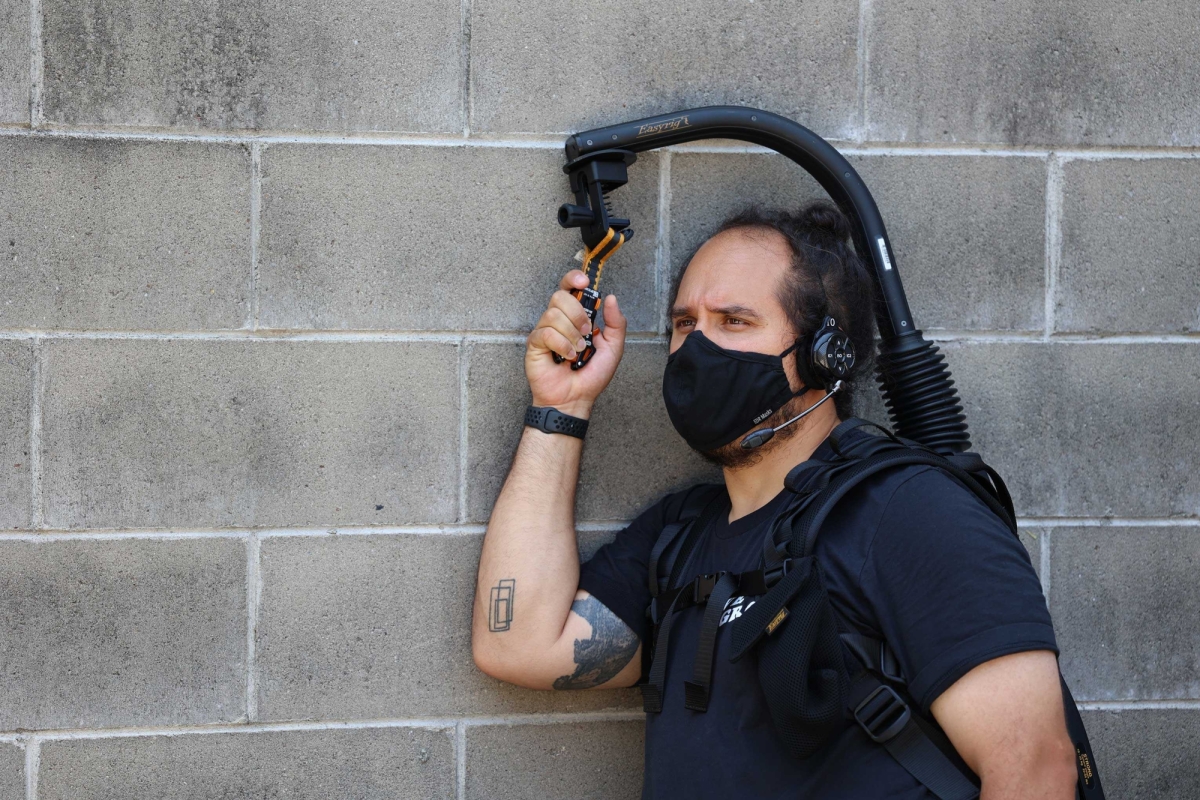
DP Pat Scola on-set shooting SING SING. Photo by Phyllis Kwedar.
"I wanted to be part of this production from the moment Greg initially pitched it to me over the phone," says Scola, who was named in Variety's '10 Cinematographers to Watch' in 2021 and won the ASC's Spotlight Award for his work on Michael Sarnoski's Pig (2021).
"When Greg told me that he and Clint had been working on a story based around the RTA program and its positive impact on prisoners, I instantly loved what he was talking about and thought it could be really special.
"However, well before I read any kind of script, what I got initially was a wealth of Zoom video conversations that Greg had been having with the RTA and the cast, including Clarence Maclin. I learned about their real, lived experiences, and got a really great sense about what I'd be stepping into.
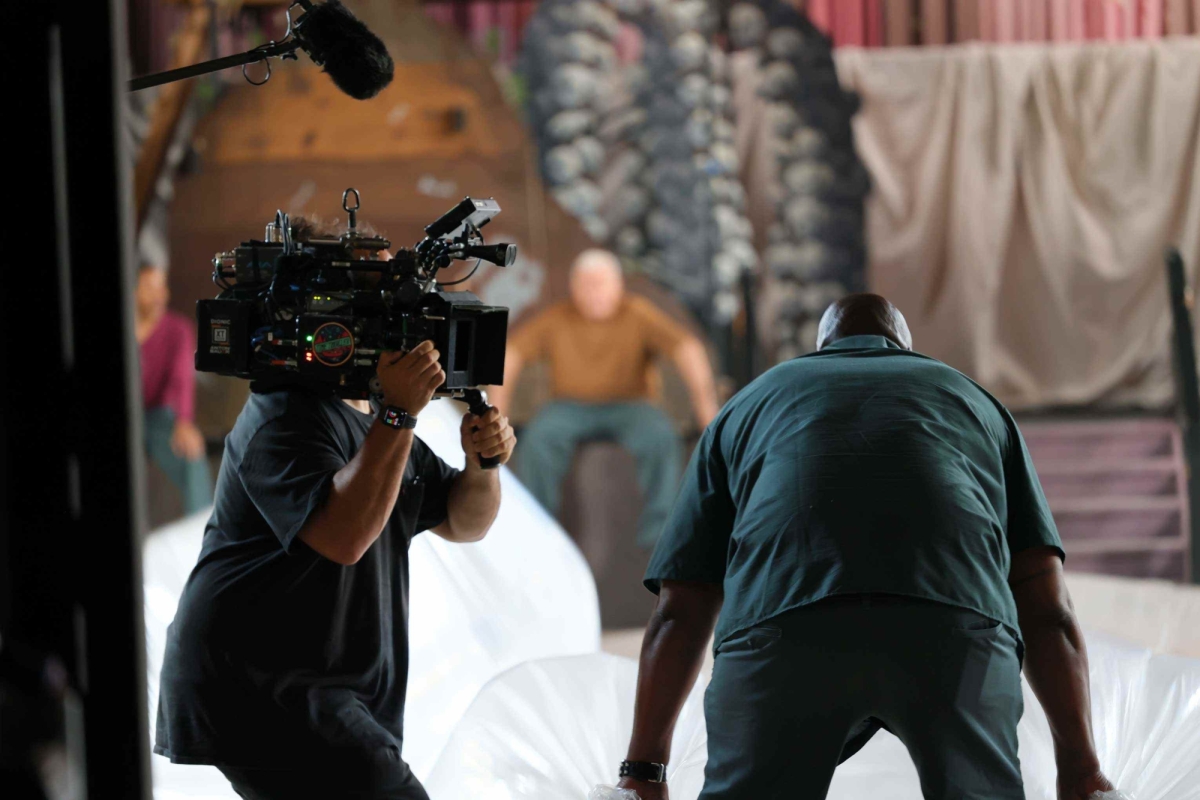
DP Pat Scola on-set shooting SING SING. Photo by Phyllis Kwedar.
"When I eventually read the script, I loved how the storytelling swung subtly by turns – floating between laughter and sadness, joy and heartbreak, vulnerability and transformation – which you don't see so much in movies at the moment."
Scola says he was also impressed with Kwedar's approach to the feel of the film.
"Rather than having clanking keys, crashing cell doors and flickering fluorescent lights that you see in regular jail-based dramas, the active intention aesthetically was to follow the men and their emotional journeys through their acting, to let what was happening in front of the camera drive the filmmaking and, in that way to deliver the unexpected.
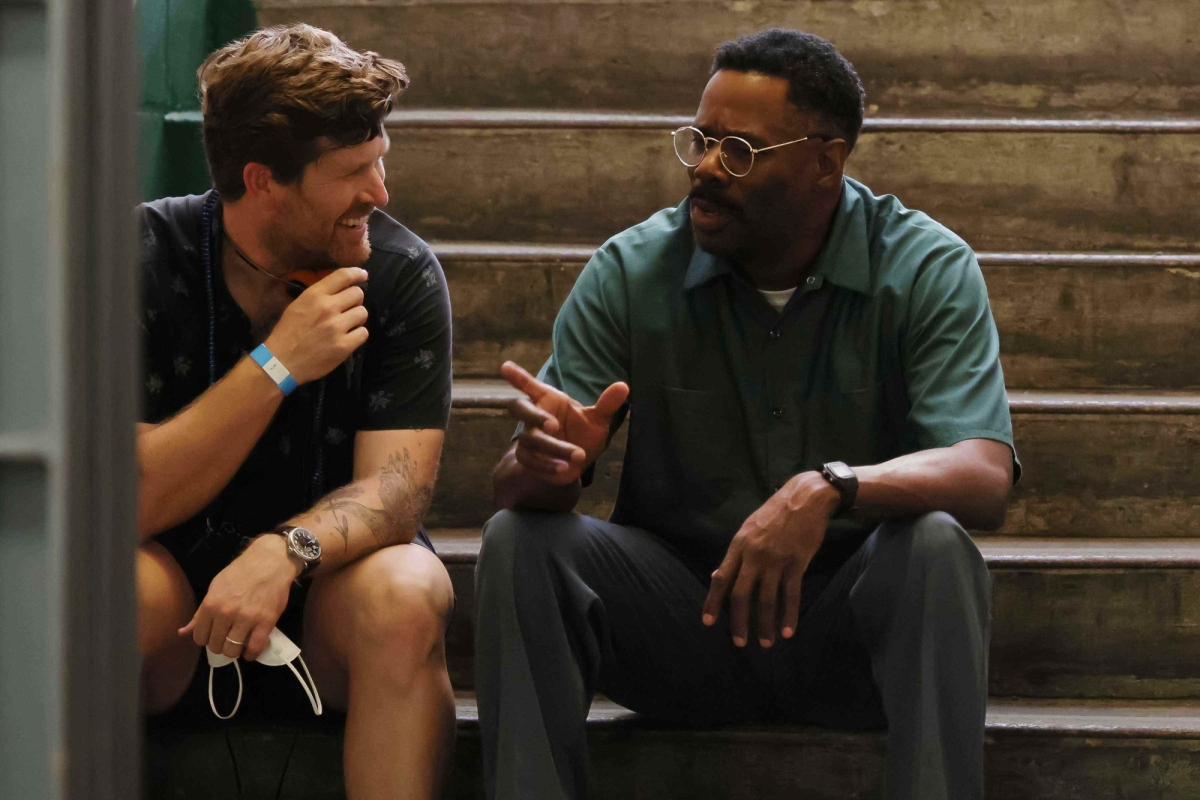
(L-R) Greg Kwedar, Colman Domingo. Credit: Phyllis Kwedar
"Greg wanted us, the crew, to step out of the way. And although there was a script, I knew the film would be partly improvisational, a kind of hybrid narrative documentary. This way of thinking about the film as a whole stuck with me and heavily influenced the approach the camera would end up taking."
Apart from a collection of stills photographs from the 1970s depicting the daily lives of inmates and the way prisons are generally run, Scola says there we no other visual cues for the film, adding, "I think that staying away from certain references is helpful when you're trying to crack something that feels a little different inside a place like that."
Production on Sing Sing took place over the course of 19 shooting days in July 2022 and was split between three major locations in Upstate New York: the decommissioned Downstate Correctional Facility and nearby Hudson Sports Complex, both of which doubled for different exteriors and interiors of the real Sing Sing prison, plus Beacon High School in Upstate New York, where the RTA theatre shows were filmed.
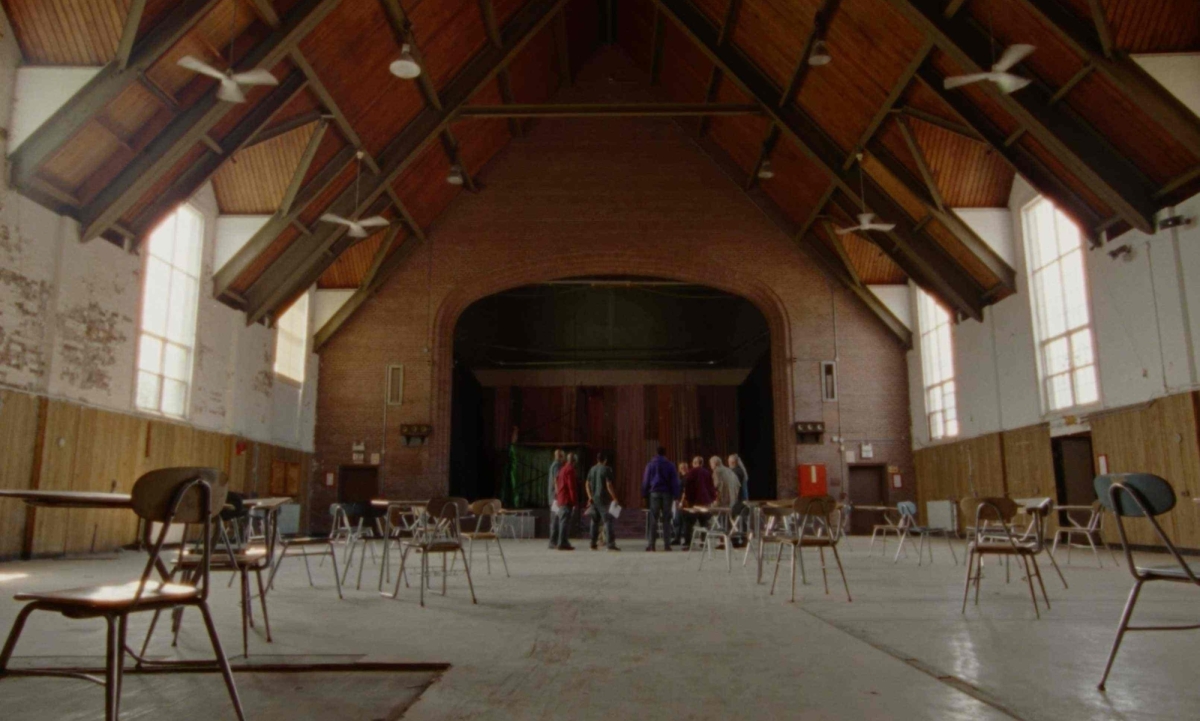
A scene from SING SING. Courtesy of A24.
"When we scouted the Downstate Correctional Facility, one of the things I found both impressive and oppressive, was the number of windows and the natural daylight coming through them," Scola recalls.
"Beyond the confines of the prison walls and the razor wire, you can see trees and forests in the distance. That element of tragedy – that you can see the world out there, but can't actually go and touch it, that the place was actually light and warm, and not bleakly lit with fluorescents – was really striking. We made the decision to allow the spaces to light themselves naturalistically and speak to the visual story we were looking to tell."
As for shooting on 16mm film, Scola remarks, "While this was my first feature on film, it wasn't something I was tremendously concerned about. I started out as a film loader on features and have regularly shot shorts, commercials and music videos on film as a DP. Greg, Clint and our producer, Monique Walton, were fully-behind the choice of 16mm film and were great creative partners throughout.
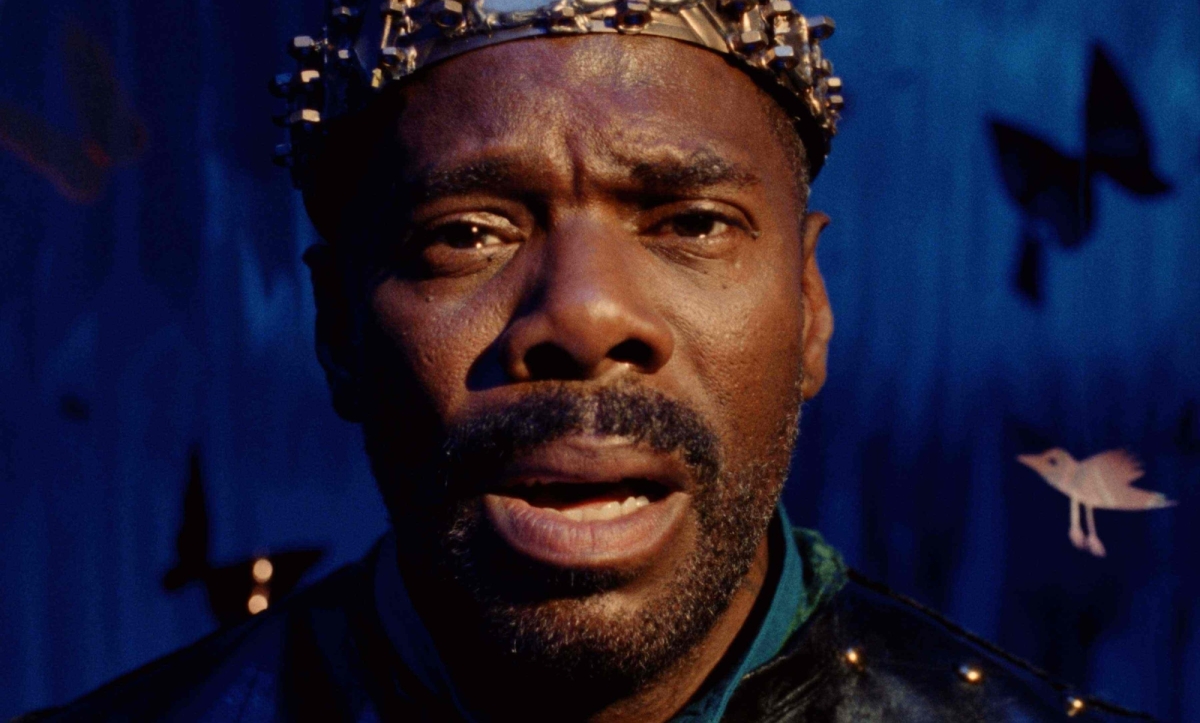
Colman Domingo stars in SING SING. Courtesy of A24.
He adds, "This film was all about honesty and intimate observation, and there's nothing better than film, especially the color and texture of 16mm film, to depict that. It was also about us, the filmmakers, keeping back, letting the performers do their thing, often in long uninterrupted oners or 360-degree turns. And that's something that was also supported by the comparatively small footprint which comes with shooting on film – we were just nine people including me, when we filmed."
Scola framed Sing Sing in 1.66:1 aspect ratio, using ARRIFLEX 416 and SR3 16mm cameras, fitted with Zeiss Ultra 16 lenses, plus a Canon zoom, capturing on KODAK VISION3 250D 7207 16mm film for the vast majority of the production. The camera and lens package was provided by Panavision New York.
"In this story the human face was our landscape, often with very intimate close-ups. The taller nature of the 1.66:1 frame allowed us to create that kind of intimate portraiture, and we used the 25mm a great deal during production," Scola explains.
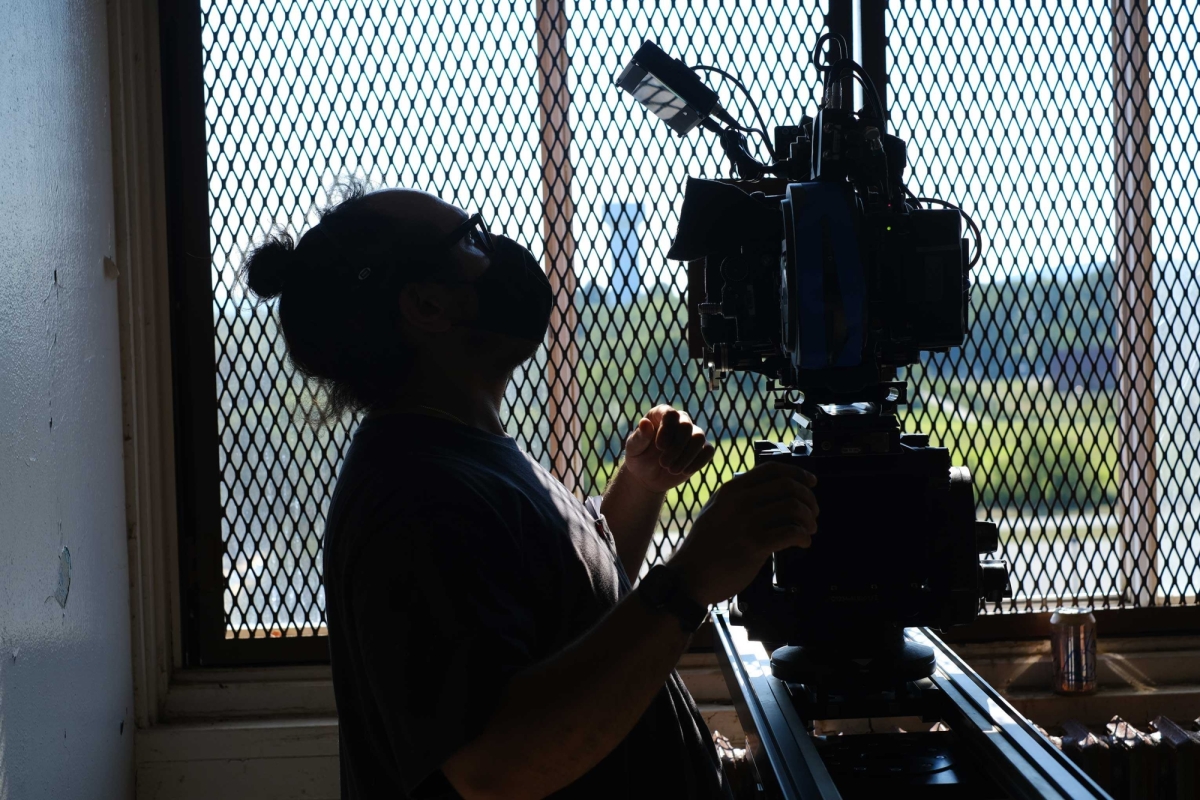
DP Pat Scola on-set shooting SING SING. Photo by Greg Kwedar.
"The Ultra 16 lenses are small, simple and fast, typically T1.3, and give great optical performance on 16mm film. They are also lightweight, around a kilo each, which was another key consideration in choosing them, as I knew I'd be holding the camera for the majority of the film and that we'd often be rolling for an entire magazine length without cutting."
Scola elected to film Sing Sing entirely on KODAK VISION3 250D 7207 16mm film, apart from a long oner of the dress rehearsal for the group's new show that introduces all the characters in their costumes, which was filmed on KODAK VISION3 500T 7219 16mm film, due to the dark environment and minimal lighting. Film processing was done at Kodak Film Lab in New York, with dailies and 2K scans provided by Metropolis Post.
"As opposed to digital, I find film allows me to be a little less precious with my lighting and is a lot more forgiving. I chose the 250D as I wanted a visual consistency and cohesion in the looks across our day/night, interior/exterior scenes. The 250D sits nicely in that middle ground, where you're not staring through a dense grain structure, but still feel there is some texture and grit to the image. The 250D also has natural warmth and richness of color to it, which was something we felt would support the presence and emotional performances of our cast on screen.
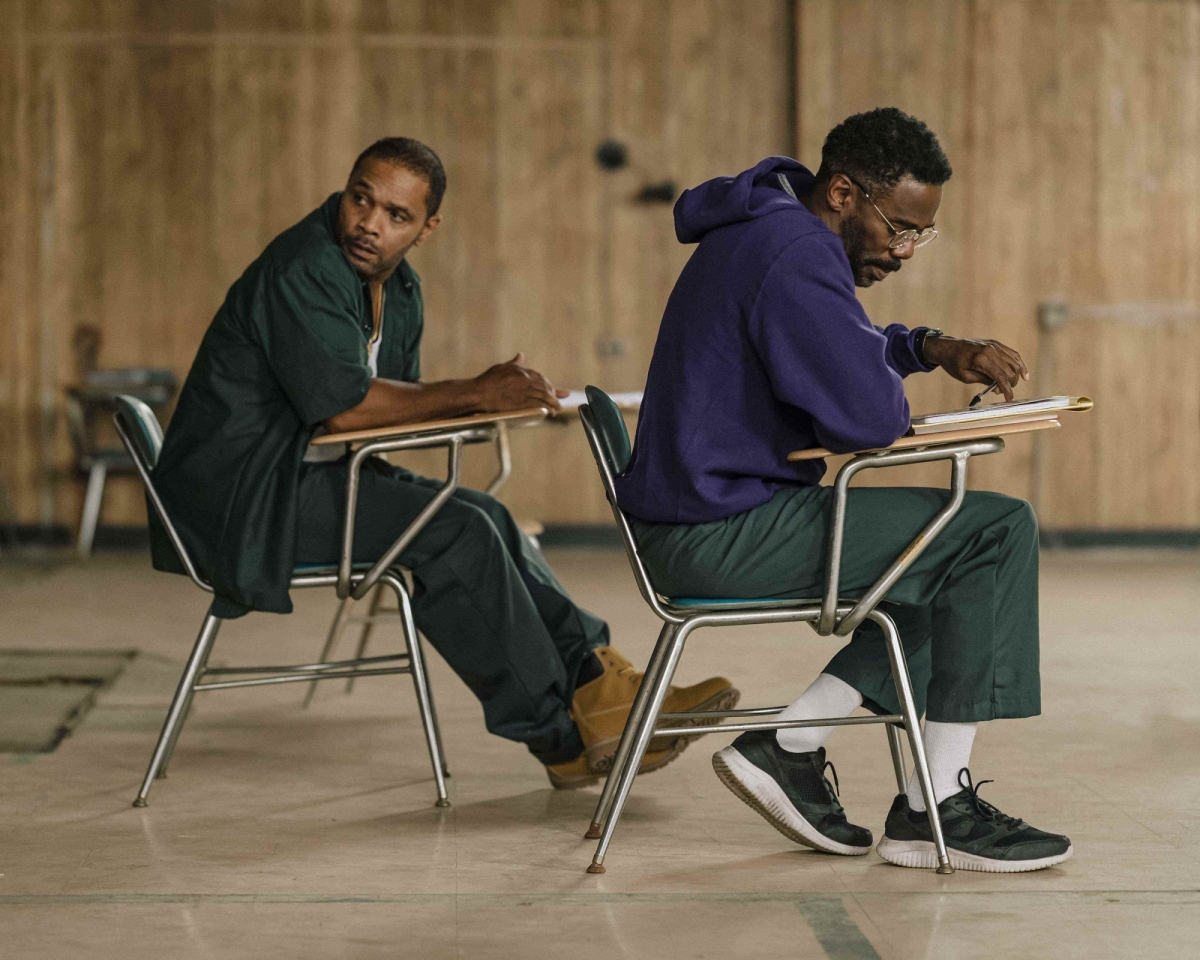
(L-R) Clarence Maclin, Colman Domingo. Credit: Dominic Leon
"I didn't have a tremendous amount of time for testing, so I essentially chose the 250D based off positive experiences I've had in the past. It's pretty expansive in its latitude, retaining details in the highlights or darker areas of the image, and it was never a concern as to how the variety of skin tones would mix together, all while exposing normally on-set and processing normally at the lab. I think the 2K scans helped to retain a bit of the raw magic that comes with 16mm."
Scola operated the camera, supported by Eric Macey and Chris Feleppa working as 1st AC and 2nd AC respectively, and Danielle Carroll as the loader. The key grip was Justin Duquette, aided by Dennis Pires, and the lighting team was led by gaffer Joel Marich, with Adrienne Subia as best electric.
"That was everybody. It was a small team," Scola remarks. "Greg wanted the actors to feel free to act, and it was my job to capture their performances in a way that felt cinematic, yet part of the story. We didn't have the budget for fancy filmmaking gear like cranes, and equipment like that would have been too intrusive anyway.
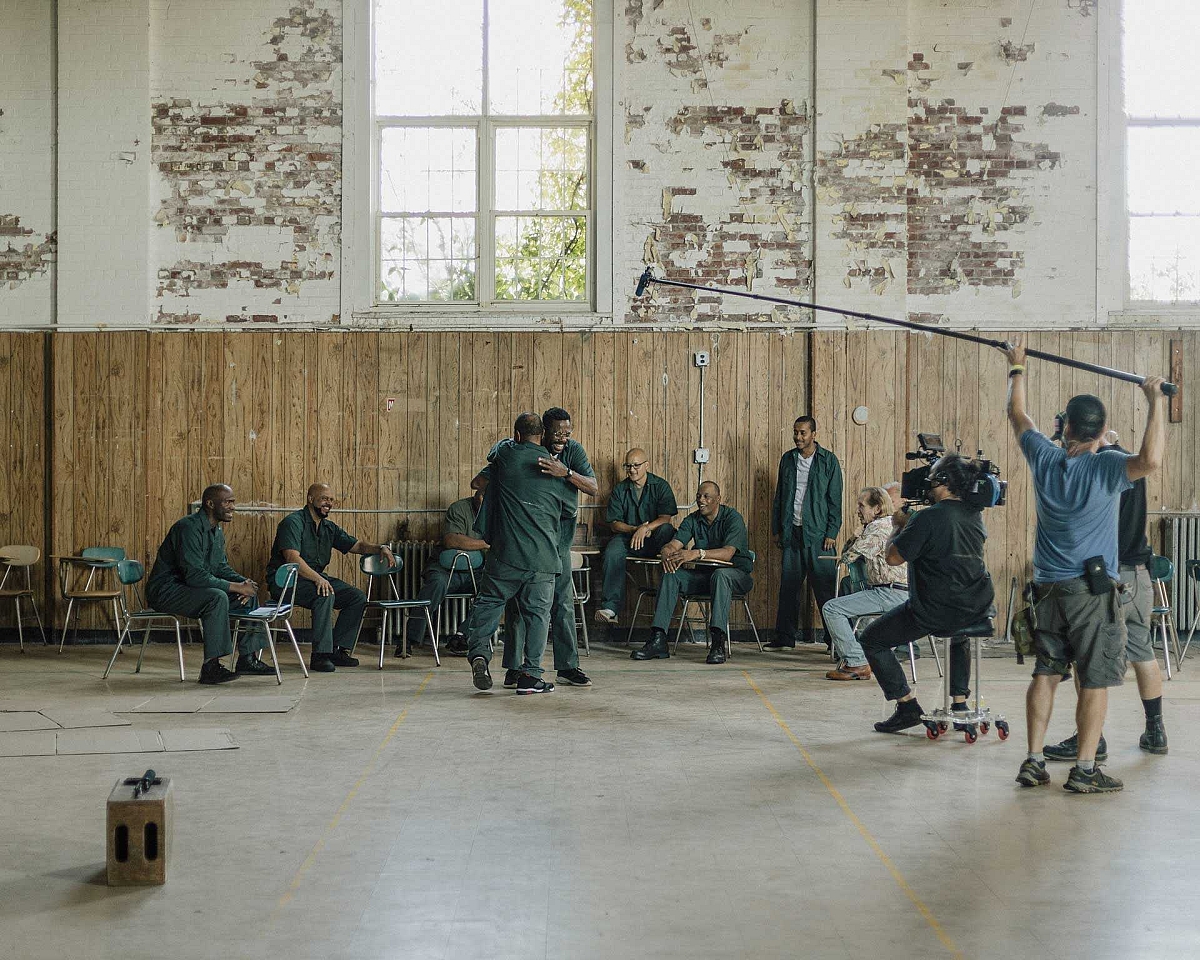
(L-R) Cast. Credit: Dominic Leon
"I am pretty rigorous when it comes to shot listing, and Greg was both willing and generous with his time, to go through the entire script, line by line, beat by beat with me. A lot of what we came up with exists on screen, although sometimes we threw it away when something better appeared on the day.
"We shot a lot of the movie handheld, but nothing frenetic, with the purpose of connecting the audience to the emotions of the characters – their energy, joyfulness and vulnerabilities – and contrasted that with more composed, static or locked-off camera work in other scenes.
"For the 360-degree pans around the ensemble we used a tripod or sometimes used a 'Butt Dolly,' which was basically a stool with little rubber wheels where I could use my feet and legs to turn myself around on the seat. This was very stripped down, bare bones filmmaking, where I had to be very tuned-in to the performances, but it was very effective nonetheless."
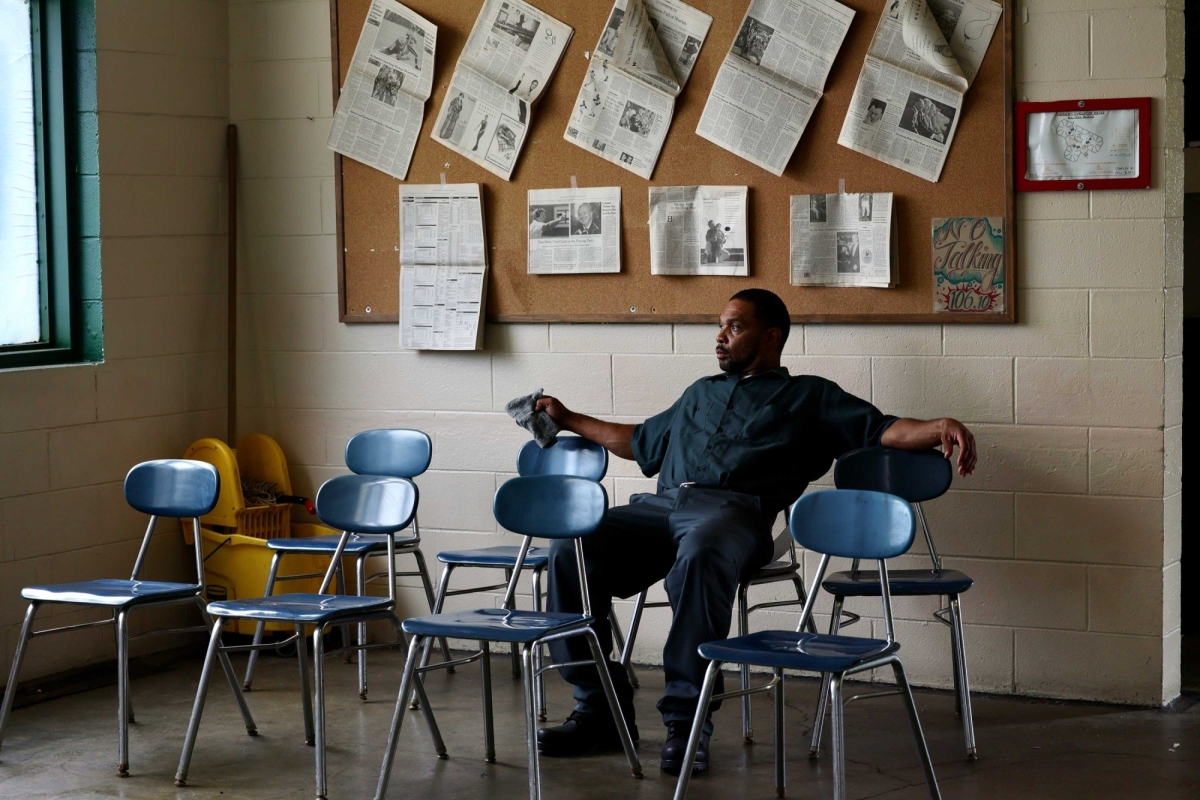
(L-R) Clarence Maclin. Credit: Dominic Leon
Being a low budget film, the stripped-down nature of production also extended to the lighting.
"Our lighting package was very simple, and we embraced the natural daylight coming through the widows when we shot at Downstate Correctional Facility and Hudson Sports Complex. To keep things looking natural we generally illuminated our scenes with just a couple of Creamsouce Vortex LEDs plus Astera Titan tubes. We also had a Lite Gear 4x8 Lite Tile box that we used as a fill while using the windows as the key light, or to help balance the exposure so I could carry the window exposure the whole time if the weather changed outside."
Scola did, however, juxtapose the sense of naturalism by infusing the imagery with greater warmth and color for some of the film's more tender moments, as well as the theatrical performances themselves.
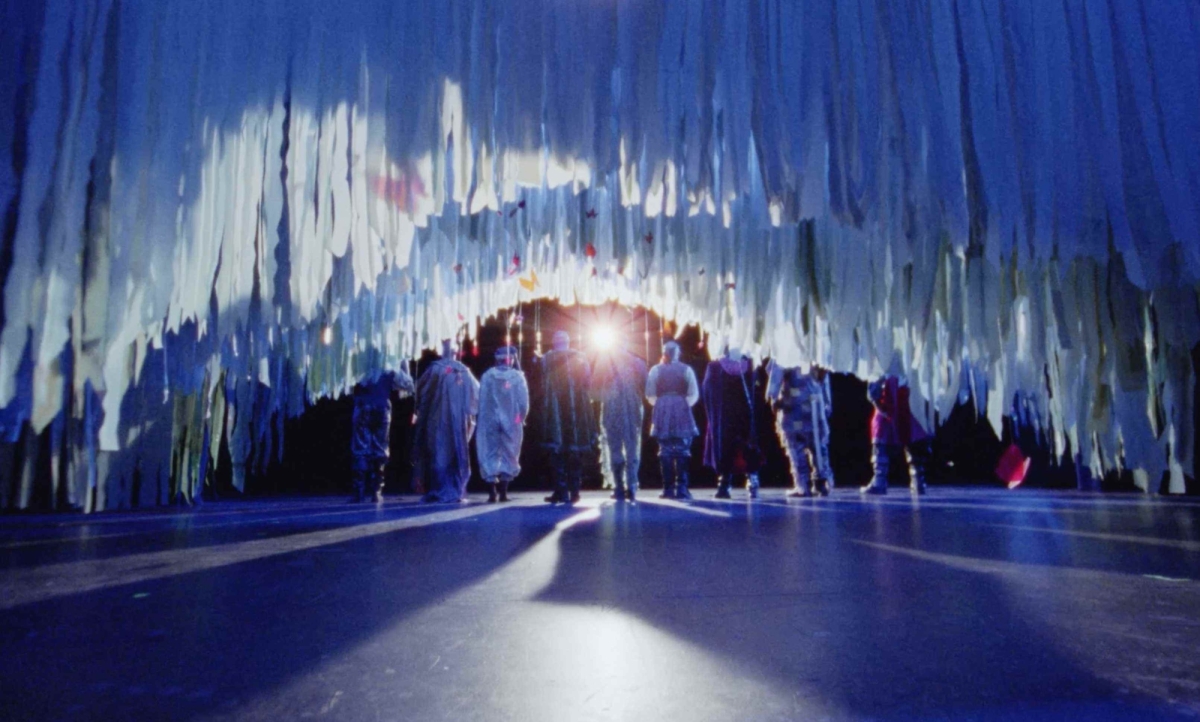
A scene from SING SING. Courtesy of A24.
He explains, "For the scene in which Divine G and Mike Mike converse with one another between their cells at night, we created a sodium vapor orange that prisons would have had back in the day, so as to generate a certain warmth to the image and convey friendship and camaraderie that exists between them.
"For the theatrical production scenes which we shot at Beacon High School, we were able to get a little more adventurous and expressive with the lighting. Liaising with the drama department at the school, we installed some of our lamps on the stage lighting gantry to supplement their own existing bank of Tungsten Pars and follow-spots. They also allowed us to hire one of their students to run the lighting console as they knew the board and how to operate fixtures.
Due to variation of low and bright illumination in that scene we shot on the 500T 7219, and I was very pleased with the result."
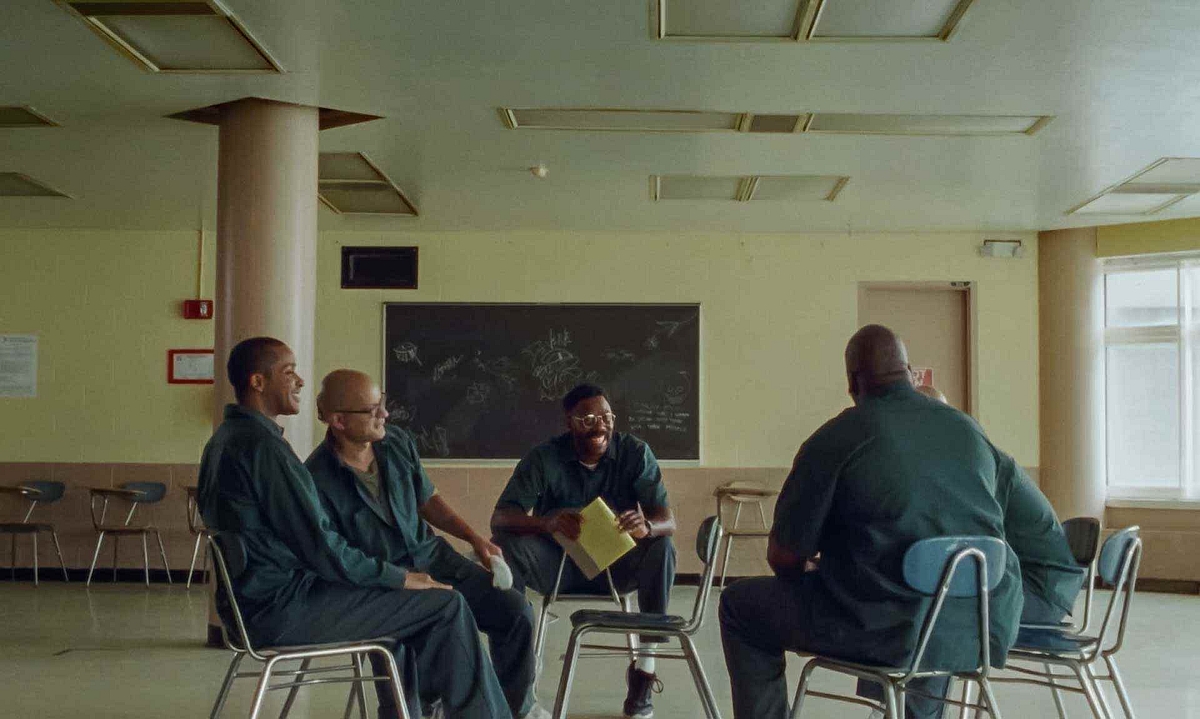
(L-R) David “Dap” Giraudy, Sean San José, Colman Domingo. Credit: Courtesy of A24
Looking back over his time and efforts on the production Scola observes, "I felt a great responsibility towards shooting this film. Most of the characters had never seen a film camera before and had certainly never made a film. So it was my prime concern to make sure they were lifted and celebrated, and not exploited for the sake of the storytelling.
"Ultimately, 16mm film is a tool, a format and an artistic medium that I personally just happen to love, and it brought a certain warmth and honesty to this unique production. Artistic endeavor is a process through which we can strive to better understand ourselves and each other. I hope, more than anything, that when people get to see this film, it might upend their thoughts about what it is like for the wealth of humans who are locked away, not just the RTA participants, who we don't get to see or hear about."